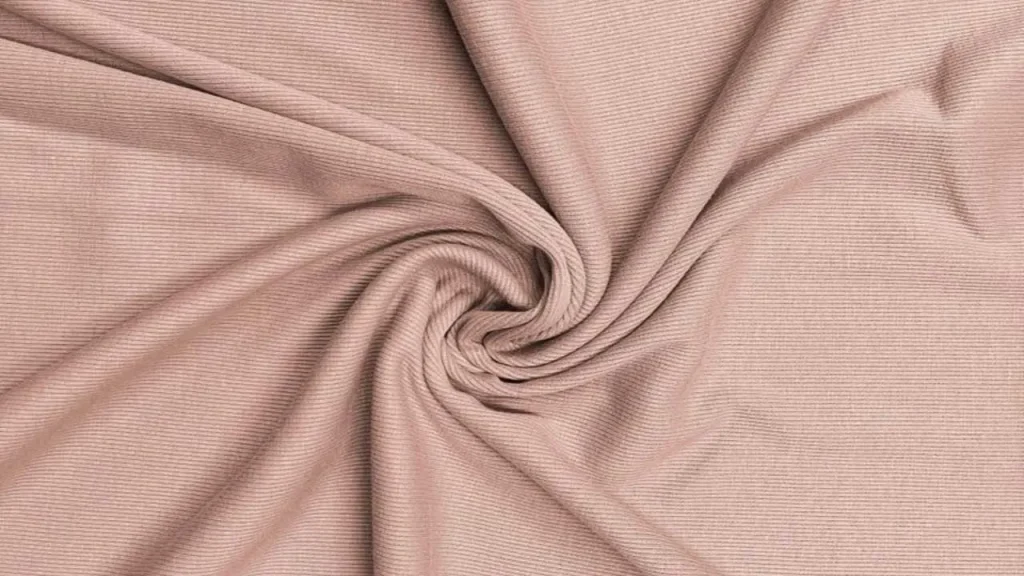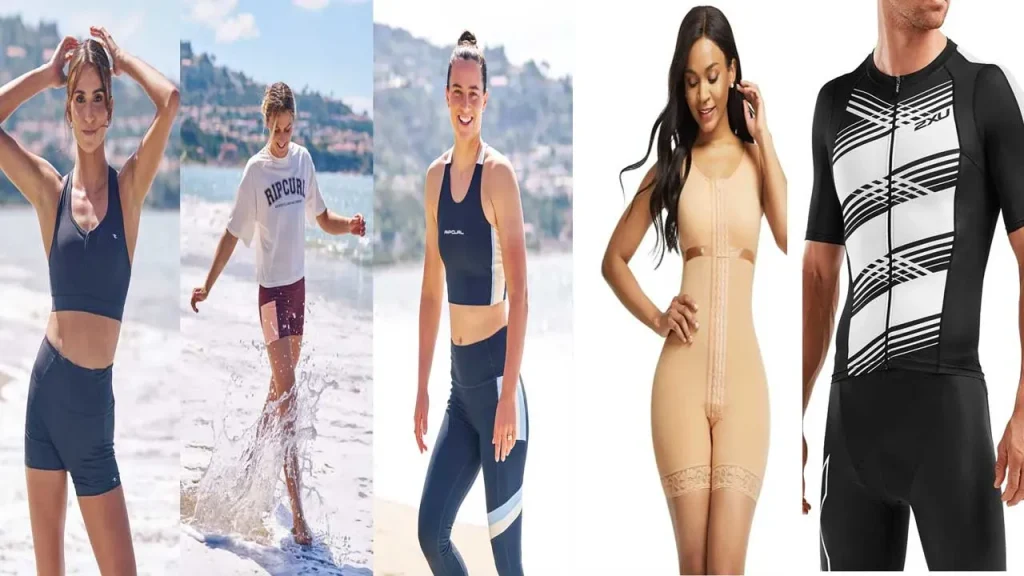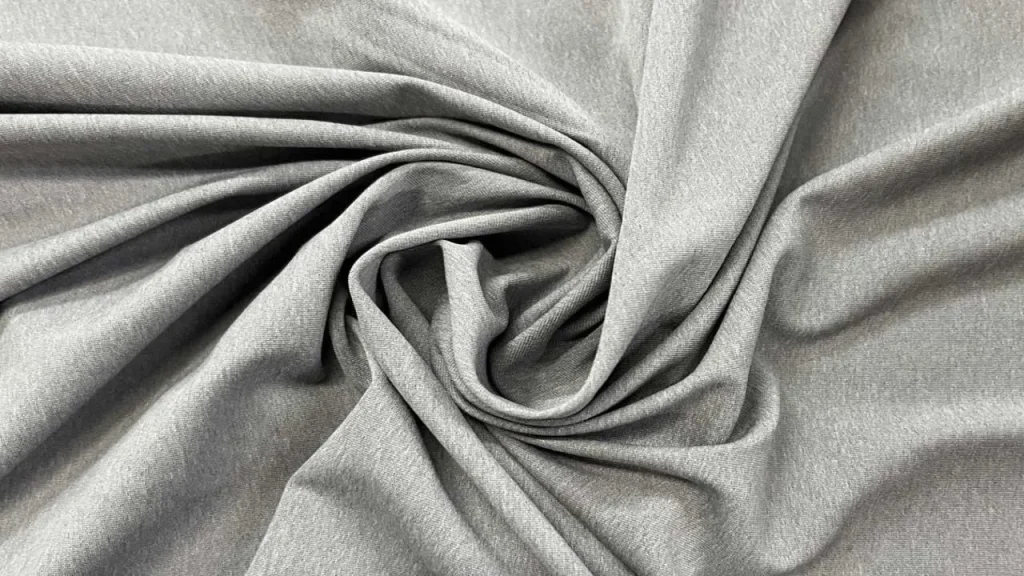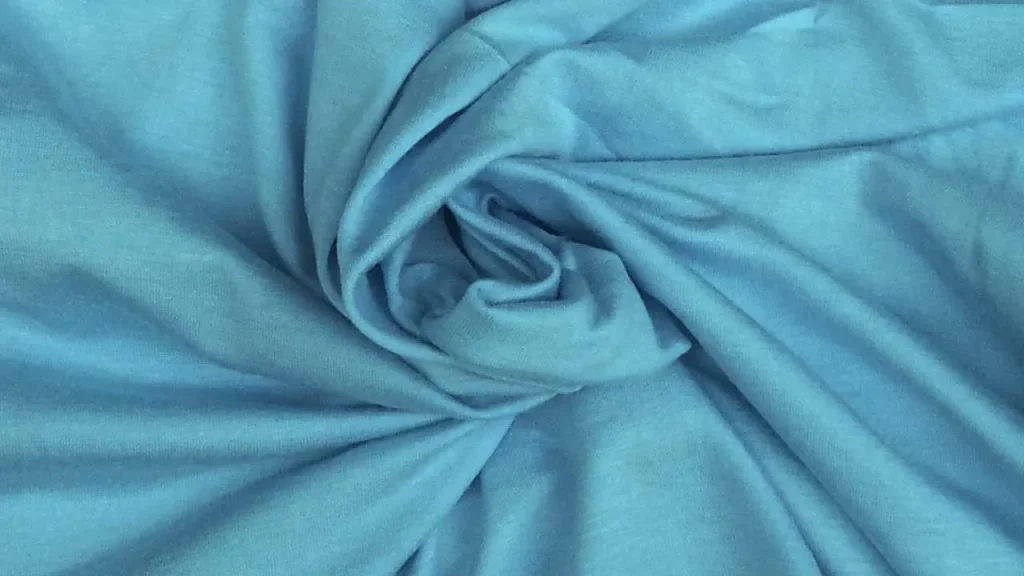Clothing Made with Spandex Properties, Uses, and Benefits for Fashion and Activewear
As an expert in fabrics, I’ve witnessed how spandex has revolutionized the world of clothing, blending flexibility, durability, and comfort in ways that no other fabric can. Whether it’s activewear, swimwear, or casual outfits, spandex has become the go-to fabric for modern clothing. Its remarkable stretch up to five times its original size makes it ideal for form-fitting designs, while also offering a snug, comfortable fit that moves with the body. What excites me most about spandex is its ability to enhance the performance of athletes and everyday wearers alike, providing both support and freedom of movement.
However, as much as spandex offers benefits, we must also consider its environmental impact. As a synthetic fabric derived from petroleum, spandex’s production requires significant resources, and its non-biodegradable nature contributes to growing textile waste. But the good news is that innovation is leading the way toward more sustainable alternatives. In this blog post, I’ll share insights into the many uses, benefits, and eco-friendly solutions surrounding spandex, helping you make informed choices for both your wardrobe and the planet.
What is Spandex?
Spandex, also known as Lycra or Elastane, is a synthetic fabric famous for its incredible stretch. It can expand up to five times its original size, making it ideal for clothing that needs flexibility and a snug fit. This fabric is often used in activewear, swimsuits, and other form-fitting garments, as it allows for comfortable movement and maintains its shape over time.

Clothing with spandex blends perfectly with other materials like cotton or polyester to enhance both comfort and performance. It’s lightweight, dries quickly, and resists wrinkles, which is why it’s a go-to fabric for everything from workout leggings to casual wear. Whether you’re exercising or relaxing, clothes with spandex provide a combination of style, comfort, and durability.
How is Spandex Fabric Made?

Spandex fabric is made through a process called solution dyeing, where the polymer (usually polyurethane) is dissolved in a liquid to form a thick, gooey substance. This liquid is then extruded through tiny holes in a spinneret to form long fibers. These fibers are stretched to their maximum length while still in their liquid state, which gives spandex its unique elasticity. Once the fibers are stretched, they are cooled and solidified, creating the stretchy material we know and love.
The spandex fibers are then woven or knitted into fabric, often blended with spandex and other materials like polyester or cotton to enhance the fabric’s properties. This combination ensures that clothes made from spandex are not only stretchy but also durable and comfortable. The end result is a fabric that maintains its shape, stretches with your movements, and is quick-drying, making it perfect for athletic wear, active clothing, and even casual outfits.
Uses of Clothing Made with Spandex Fabric
Spandex is a highly flexible fabric known for its ability to stretch and retain shape, making it a popular choice for a wide range of clothing. This fabric’s unique properties allow it to fit closely to the body, enhancing both comfort and performance. From sportswear to casual outfits, spandex is used in many types of clothing due to its lightweight, breathable, and moisture-wicking qualities. Here are some of the most common uses of clothing made with spandex:

- Activewear: Items like leggings, workout tops, and sports bras, which benefit from spandex’s stretchiness and support. Spandex helps maintain the shape and fit, ensuring comfort during physical activities.
- Swimwear: Bikinis and one-piece swimsuits, offering a snug fit and flexibility in the water. Spandex’s water-resistant and quick-drying properties make it an ideal material for swimsuits that need to hold up in different environments.
- Casual Wear: T-shirts, dresses, and jeans made with spandex for a comfortable, form-fitting look. These pieces are popular for their ability to move with your body while still looking stylish and modern.
- Compression Garments: Clothing like shapewear or compression socks, which help improve circulation, provide muscle support, and promote recovery. These garments are especially popular for athletes or those looking for additional support.
- Athletic Compression Gear: Compression garments made with spandex help athletes improve circulation, reduce muscle fatigue, and enhance performance during and after exercise.
- Shapewear: Clothing items like body shapers, waist trainers, and slimming garments are often made with spandex for their ability to provide a smooth and contoured appearance.
From gym sessions to beach days, and even everyday wear, clothing made with spandex is designed to enhance comfort and performance. The fabric’s ability to stretch while keeping its shape makes it a go-to material in modern fashion.
Key Properties of Clothing Made with Spandex Fabric
Spandex is a unique and highly valued fabric due to its remarkable properties. These features not only make it popular in athletic wear but also in fashion and other everyday clothing. Here are some key characteristics that make spandex stand out:
- Elasticity: One of the most defining characteristics of spandex is its extraordinary stretchability. It can stretch up to five times its original length and still retain its shape. This makes spandex ideal for form-fitting clothing, providing a snug, body-hugging fit without losing comfort or durability.
- Durability: Spandex is incredibly strong and resilient, resisting wear and tear even after frequent use and washing. Unlike some fabrics that lose their elasticity over time, spandex retains its stretch, making it perfect for long-lasting garments.
- Comfort: Spandex offers a second-skin feel, molding to the body and moving with it. Its flexibility provides unmatched comfort, allowing for easy movement, whether in athletic wear, casual outfits, or even compression garments. This is why spandex is often blended with other fabrics to enhance both the fit and feel.
- Breathability and Moisture-Wicking: Spandex helps regulate temperature by allowing air to flow through the fabric. It also has moisture-wicking properties, drawing sweat away from the body and keeping the skin dry and cool during physical activities, making it a popular choice for workout gear and activewear.
- Quick-Drying: Spandex dries rapidly, which makes it perfect for swimwear and other garments that need to be exposed to water or sweat. This property is particularly beneficial for athletes or individuals engaged in water activities.
- Resistant to Wrinkles: Spandex resists wrinkles, which makes it easy to maintain. Unlike cotton or linen, spandex garments remain smooth and ready to wear after being packed or worn for long hours, adding convenience for those on the go.
- Shape Retention: Spandex retains its shape even after extensive stretching. This property ensures that garments made with spandex, such as leggings or swimsuits, always look smooth and structured, offering a polished look while still providing comfort.
- UV Resistance: Spandex also has a degree of UV resistance, which is particularly beneficial in swimwear and outdoor athletic wear, helping to block harmful rays from the sun.
These combined properties make spandex an indispensable fabric in the clothing industry, offering a perfect balance of comfort, durability, and performance. Whether you’re looking for sportswear, everyday outfits, or special garments like shapewear, spandex ensures a sleek, flexible, and comfortable fit.
Is Clothing Made with Spandex Fabric Good or Bad?
Clothing made with spandex fabric offers several advantages, especially in terms of comfort and flexibility. The primary benefit of spandex is its exceptional stretch, which allows garments to fit snugly and move with your body. This makes it an excellent choice for activewear, leggings, and swimwear, where freedom of movement is essential. Spandex also contributes to durability, as it is resistant to wear and tear, and it dries quickly, making it ideal for sports and workout clothing.
However, there are some downsides to spandex. The fabric tends to be less breathable compared to natural fibers like cotton, which can lead to discomfort during intense physical activity or in warmer climates. Additionally, spandex can lose its shape over time, especially if not blended with other more stable fabrics like polyester or nylon. It may also not feel as soft or natural against the skin when worn for extended periods, which could affect comfort for some people.
Different Types of Spandex Fabric
Spandex fabric can be blended with various fibers to enhance its qualities, making it perfect for different types of clothing. Each blend serves a specific purpose, offering unique benefits for various uses. Here’s a closer look at some popular spandex blends:
Cotton Spandex

Cotton Spandex is a combination of the softness and breathability of cotton with the flexibility and stretch of spandex. This blend is ideal for everyday wear, such as t-shirts, leggings, and dresses, providing comfort while still allowing for easy movement. The natural feel of cotton makes it perfect for casual clothing, while the spandex adds just the right amount of stretch for a form-fitting, comfortable fit. This blend also offers great moisture absorption, keeping you cool in warmer weather. It is a versatile fabric that can be worn for a variety of occasions, from casual outings to active moments.
Nylon Spandex

Nylon Spandex blends are known for their durability and resistance to wear and tear. Nylon spandex is lightweight, strong, and stretches easily without losing shape, making it perfect for activewear and swimwear. Its quick-drying properties also make it a great choice for water-based activities or fitness gear, providing both comfort and performance in active situations. Additionally, the fabric is smooth to the touch, offering a soft, sleek finish. Nylon spandex garments also retain their shape even after multiple washes, making them long-lasting and reliable, especially in demanding environments like gyms or pools.
Polyester Spandex

Polyester Spandex is widely used in sportswear and performance clothing due to the moisture-wicking properties of polyester combined with the stretch of spandex. This blend offers excellent durability, shape retention, and resistance to fading or shrinking. Polyester spandex is commonly found in workout gear, yoga pants, shapewear, and other garments that require high levels of stretch, comfort, and durability. The fabric’s ability to move with the body while maintaining its form makes it ideal for intense physical activities, ensuring comfort and support throughout. Its resilience to environmental stressors like UV exposure also helps maintain its quality over time.
Rayon Spandex
Rayon Spandex combines the smooth, luxurious feel of rayon with the flexibility of spandex. This blend is soft and comfortable, making it a popular choice for fashion garments such as dresses, tops, and casual wear. Rayon spandex provides excellent drape and a smooth finish, which enhances the overall look and comfort of the clothing, while still offering stretch for a better fit. The fabric has a beautiful sheen and feels cool to the skin, making it perfect for warmer climates. Rayon spandex is also breathable, making it suitable for various weather conditions while offering shape retention and easy movement for all-day comfort.
Each of these spandex blends is designed for different uses, offering a balance of comfort, durability, and flexibility. Whether you’re looking for everyday wear, activewear, or fashion-forward pieces, there’s a spandex blend that suits your needs.

Caring for Clothing Made with Spandex Fabric
Taking proper care of clothing made with spandex fabric is essential to maintain its elasticity, shape, and overall lifespan. Spandex is a durable material, but improper care can cause it to lose its stretch or fade over time. To keep your spandex garments looking and feeling their best, follow these simple care tips:
First, always wash spandex clothing in cold water to prevent the fabric from losing its shape. Avoid using harsh detergents or bleach, as these can break down the fibers. Instead, choose mild detergent to preserve the elasticity and color. It’s also important to turn spandex garments inside out before washing to minimize wear on the fabric’s surface.
When it comes to drying, air drying is preferred over using a dryer, as high heat can damage the fabric and cause it to shrink. Simply lay your spandex clothing flat or hang it to dry, away from direct sunlight, which can cause fading.
Lastly, avoid ironing or steaming spandex fabric, as the heat can distort its stretchiness. If your garment does need a touch-up, use a low heat setting or steam it from a distance to avoid direct contact with the fabric. By following these simple care steps, you can keep your clothing made with spandex looking fresh and comfortable for a long time.
Why Spandex is a Game-Changer for Athletes

Spandex has become a vital fabric for athletes due to its unique properties that enhance performance and comfort during physical activities. One of the key reasons spandex is so popular in athletic wear is its ability to provide a snug, form-fitting fit that supports muscles and reduces unnecessary movement. This compression effect helps in improving circulation, which can enhance performance and reduce muscle fatigue during intense exercise or long workouts.
In addition to its supportive qualities, spandex is incredibly flexible, allowing athletes to move freely without any restriction. This makes it ideal for sports like running, gymnastics, swimming, and cycling, where flexibility and comfort are crucial. Spandex also wicks moisture away from the skin, helping athletes stay cool and dry during exercise, which is essential for maintaining focus and comfort. Moreover, the fabric’s durability and quick-drying nature ensure that athletes can rely on spandex garments for both training and competition, regardless of weather conditions or the intensity of their workouts.
Fashion Revolution with Spandex
Spandex has played a pivotal role in transforming the fashion industry, offering a new level of comfort, flexibility, and style. Clothing made with spandex allows for a form-fitting design that moves with the body, providing both a sleek appearance and unrestricted movement. This has led to the rise of activewear, athleisure, and performance costumes, where style meets comfort. Whether it’s yoga pants that stretch seamlessly during a workout or figure-hugging dresses that provide shape and comfort, spandex has redefined how we view modern fashion.

The fabric’s ability to retain its shape and resist wrinkles also contributes to the ease of maintenance, making spandex-based garments a practical choice for everyday wear. Additionally, designers are continuously experimenting with spandex blends, combining it with fabrics like cotton, polyester, and nylon to create a variety of textures, durability, and breathability. As a result, clothing made with spandex is no longer just for athletes but has become a mainstay in casual, formal, and high-fashion wardrobes alike.
Common Myths About Clothing Made with Spandex
One common myth is that clothing made with spandex is only suitable for athletic wear or gym clothes. In reality, spandex is a versatile fabric that is now used in everything from casual wear to formal fashion. The stretch and comfort it provides make it ideal for a variety of clothing types, from dresses and jeans to swimwear and everyday outfits.
Another misconception is that spandex fabric is only for people with certain body types, particularly those who are slim or toned. However, spandex is designed to adapt to all body types, offering a comfortable and flexible fit for anyone. Its stretchability makes it perfect for activewear, shapewear, and casual clothing, regardless of body shape or size.
Finally, some people believe that spandex clothing loses its elasticity quickly and doesn’t last long. While improper care can damage the fabric, spandex is durable when properly maintained. When washed and dried correctly, spandex clothing retains its shape and stretch, offering long-lasting comfort and wear.
Environmental Impact of Clothing Made with Spandex
Clothing made with spandex, while popular for its stretch and comfort, does pose several environmental challenges. Spandex is a synthetic material derived from petroleum-based resources, which means its production is energy-intensive and contributes to the depletion of fossil fuels. The manufacturing process also requires the use of chemicals and large amounts of water, both of which can have a negative impact on the environment if not managed responsibly.
One of the most significant concerns with clothing made with spandex is its non-biodegradability. Since spandex is made from synthetic fibers, it doesn’t break down naturally in landfills, contributing to long-term waste. As the fashion industry continues to produce clothing at a fast pace, a large amount of spandex-based garments end up in landfills, adding to the growing problem of textile waste. These garments can remain intact for decades, further exacerbating the environmental burden.
However, there is progress being made in the industry to address these concerns. Innovations such as recycled spandex made from post-consumer waste and the development of more eco-friendly production methods are emerging. Some brands are now using biodegradable spandex blends or incorporating spandex into fabrics that are easier to recycle. By choosing brands that focus on sustainability and recycling, consumers can help reduce the environmental footprint of clothing made with spandex.
Conclusion
Clothing made with spandex has revolutionized the fashion and athletic wear industries, offering unmatched comfort, flexibility, and durability. The fabric’s stretchability and ability to retain shape have made it a go-to material for everything from activewear and swimwear to casual and formal outfits. While spandex is undeniably versatile, it is important to recognize its environmental impact, particularly its reliance on petroleum-based resources and its non-biodegradable nature.
However, as the fashion industry moves towards more sustainable practices, innovations such as recycled spandex and eco-friendly production methods are emerging to mitigate these concerns. With proper care, clothing made with spandex can last for years, offering both performance and style. As more eco-conscious options become available, spandex’s role in fashion and activewear is likely to grow, balancing comfort, style, and environmental responsibility. Embracing these advancements can help reduce the environmental footprint of clothing made with spandex while continuing to enjoy its benefits.

